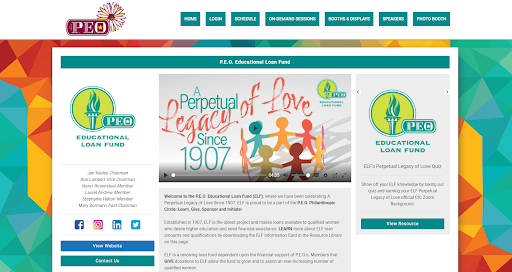
Creating engagement between your virtual event attendees and exhibitors/sponsors
Sponsors and exhibitors can make or break an event. Their presence can give confidence to organizers, create value for attendees, and add a vital contribution to the bottom line. And while the role of a sponsor or exhibitor is fairly well understood for in-person events, it’s not always clear where they fit into virtual or hybrid events.
How can event or conference organizers create a positive experience for their exhibitors if there are no physical booths?
If attendees can’t wander through an exhibit hall, stopping by for small, impromptu chats with exhibitors, how can exhibitors get the same value from that conference or event?
Now more than ever, it’s vital to create a plan around the experience for your exhibitors.
This plan informs all the decisions you make as your virtual or hybrid event takes shape, including how you solicit exhibitors, what you offer them as features, how much you charge, and what will happen during the event itself.
For this article, we look at the most productive, successful ways of creating value for your virtual event sponsors and exhibitors. Many of these involve:
- Increasing attendee engagement with your sponsors
- Giving your sponsors and exhibitors additional space to share their product or services with others in ways that simulate that person-to-person meeting.
A note on phrasing: Many of our clients actually differentiate between exhibitors and sponsors. For the sake of this article, we’ll consider them to be fairly interchangeable. If you use another term, that’s okay too.
Why is it so important to create value for your sponsors and exhibitors?
Hosting a virtual event is a ton of work. Many of the admins we see every day are so busy collecting abstracts, working on registrations, and setting up the website that they don’t have time to think about sponsors or exhibitors.
But finding a way to create an amazing, valuable experience for your sponsors and exhibitors can be just as important as it is for your attendees.
Even if your exhibitors aren’t paying to set up virtual booths, you’ll improve the virtual conference experience for everyone if there’s a clear and easy way to communicate between exhibitors and attendees.
After all, attendees want to connect with exhibitors whose products or services may be helpful. It’s your job to make sure those connections are as easy and as natural as possible.
Luckily, we have some powerful ideas for you.
Many virtual events have more attendees and are more profitable than in-person events.
Many of our clients have reduced ticket prices or made their virtual events totally free. That means they rely on sponsors and exhibitors now more than ever. And in some cases, virtual events are actually more profitable than in-person events, because they have many more attendees, but organizers don’t have to pay for expensive hotel fees, catering, and A/V equipment.
When software giant Salesforce had to turn their World Tour Sydney into a virtual event, they found that attendance went up more than 4x compared to the previous year.
Tech publisher Venture Beats hosts an annual GameBeat Summit. Because they were able to keep all their previous sponsors and add new partnerships for their virtual event in 2020, it turned out to be more profitable than their previous in-person event in 2019.
When you deliver real, genuine value to your exhibitors and sponsors, you’ll have a much easier time selling them on your event, making it all the more financially successful.
Key takeaways
1. For a virtual event, sponsors are as important to your finances as in-person.
2. The more you create value for them, the easier it will be to find more exhibitor and sponsors
3. Exhibitor Booths Are Key to Exhibitor Success
In many physical events, exhibitors rent booth space in a hall. These could be 10×10’ spaces, and often include tables, posters, flyers, and merch. Perhaps a box in which attendees can drop a business card, or a list they can sign up on to be contacted later.
When you go virtual or hybrid, you can recreate this exhibit hall by creating a virtual version, complete with virtual exhibitor booths.
Here’s an example of what we call the list view of the virtual exhibitor hall from PEO International’s September virtual convention:
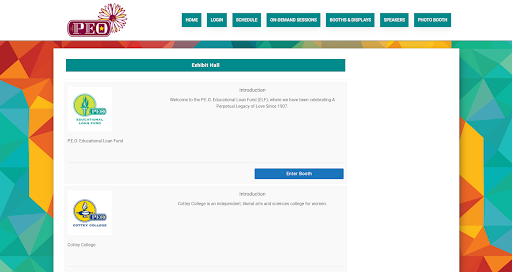
Attendees can “stroll” down the hall, reading the descriptions of each exhibitor. When they see an organization that seems interesting, they can click to enter the booth.
A virtual exhibitor booth should have many of the same things that you’d see in-person, including:
- A description of the organization
- The contact information of the person manning the booth
- Links to social media accounts
- An introductory video
- Downloadable resources like handouts
- The schedule and availability of the person manning the booth
Here’s an example of a virtual exhibitor booth that has all of those elements:

Let’s dig into a few of those elements in a bit more detail.
Manning the exhibitor booth with a schedule
When an exhibitor booth is virtual, a person visiting the booth can’t tell if the exhibitor is anywhere to be seen. Instead, an exhibitor should put a timetable or schedule into their booth description, so attendees know when they can send a message and expect an immediate response.

Use a chat tool in coordination with your schedule
The next step is to integrate a chat tool into the exhibitor booth, so that attendees have an easy way to reach out. Email is good, but instant chat is better. A messaging app will allow for more spontaneous questions and interaction.
Make sure your downloadable resources are interesting
Many exhibitors’ first instinct is to upload sales tools as resources. But remember, a good relationship brings value to both sides. If exhibitors have any interesting reports, checklists, or other resources that bring real value to attendees, those will most likely prompt more downloads and engagement.
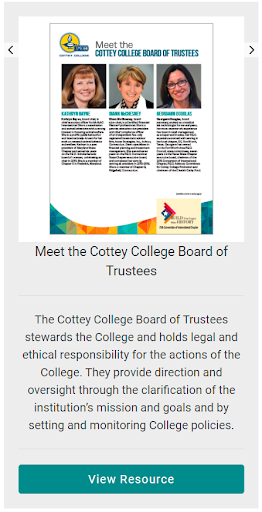
Taking it a step further, exhibitors can even gate their content behind a requirement to enter an email address, making it a lead gen magnet. Attendees get a great, free resource; exhibitors get the email address of a qualified lead.
Set up a way to track who enters each exhibitor booth
The more data you can pass onto your exhibitors, the more value they get. Set up a button in each exhibitor booth that says “check in” – and when an attendee clicks it, their email address is passed over to the exhibitor.
To encourage clicks, why not set up a raffle or some kind of prize that attendees are entered for a chance to win.
Even better, use analytics software to pass information to the exhibitors of everybody who visits their booth during the event, whether or not they click the “check in” button.
Exhibitor Booth Key Takeaways
1. A virtual booth replicates a physical booth, so make sure to add elements like handouts and contact information.
2. Add a schedule so attendees know when they can expect quick responses
3. Make your downloadable resources as interesting as you can; they’re not just ads!
4. Track everything, so you can give exhibitors visitor information after the event is over
2. Make Space for Sponsored Content Across Your Event Platform
Once your exhibitor or sponsor booths are set up, it’s time to think about other ways you can introduce value. Sponsored content can be added to a variety of places across your event platform.
Home Page Content
The initial landing page attendees visit to kick off their conference experience is likely your most-visited page. So save this space for your most important sponsors. Many of our clients add sponsor logos to the footer area of the home page.
You can also divide the footer area into different sponsor tiers, and change the size of the logos, proportional to their level of sponsorship.
Here’s an example from the International Association for Dental Research’s spring General Session and Exhibition:
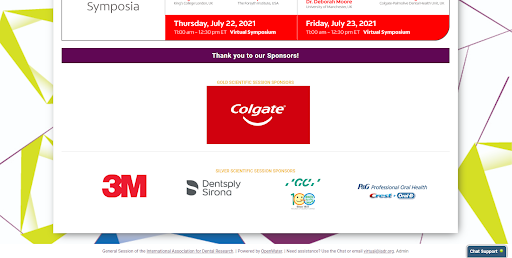
Sponsored Ad Blocks on Your Schedule
Another commonly visited page will be your conference schedule. This is where your live sessions list lives. Leverage this space, by adding blocks of ads or sponsored content to the top and sidebar of your schedule.
As long as the ads aren’t intrusive and don’t cover valuable information, they bring a strong value to your sponsors, and also to attendees interested in their products or services.
ISBioTech has sponsors listed on the right side of the page for their 10th Spring Meeting Redux:
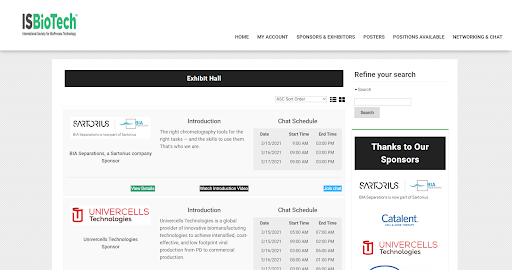
The Midwest Political science Association chose a slightly different option, opting for text links to exhibitor booths on the right side of the schedule for their 78th Annual Conference.
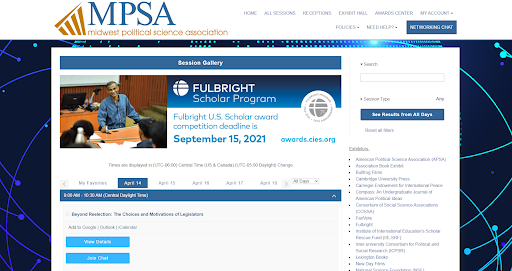
Allow Sponsorship of Specific Sessions
If there’s a good match between a sponsor or exhibitor and a specific session on your schedule, offer them the chance to sponsor or support that session.
Here, we can see that IADR has a session supported by Wiley-Blackwell, a journal with a topical connection to the session.
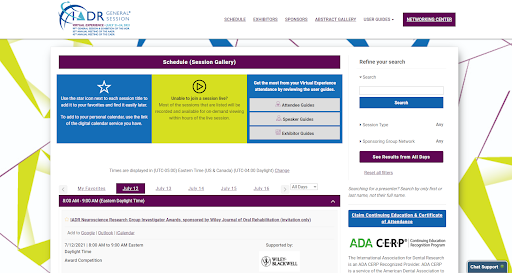
Sponsored Content Key Takeaways
1. Get creative when considering where to put sponsored content. Some ideas are: your home page, the side or top of the schedule, and in specific sessions.
2. Make sure there’s a clear matchup between the sponsor, and the session being sponsored.
3. Your home page and schedule page are going to be your most-visited pages, so make sure you value ads in those places more highly than on other less-trafficked pages.
3. Give Space in Your Schedule for Sponsor or Exhibitor Sessions
This suggestion is a bit controversial. Many of our clients don’t want sponsors or exhibitors to attend sessions. But if you really want to encourage attendee engagement with sponsors or exhibitors, allow select sponsors to create live sessions that go right into your calendar.
This is different from sponsoring a session. In a sponsor or exhibitor session, you’re giving space to that sponsor to speak directly to your attendees, at a time that you’ve carved out.
It creates an enormous value for this sponsor, because their engagement could be huge. It’s a powerful tool, but make sure it’s the right option for your event.
Sponsor or Exhibitor Sessions Key Takeaways
1. Create live sessions for your top sponsors or exhibitors
2. Make sure you value these appropriately as they can create significant engagement
4. Use Your Other Resources to Promote Your Sponsors and Exhibitors
Before your live event takes place, create a promotion schedule, during which time you’ll reach out to your registrants and attendees, letting them know what exhibitors will be present.
These messages should live in your “owned media.” These are resources controlled by you, like your email list or your social media channels.
Offer sponsors and exhibitors perks like a certain number of email blast mentions, or social media posts.
Then, before the event, send out custom emails and social media posts to your attendees promoting those special sponsors and exhibitors.
This is a powerful tool because it creates social proof. Your attendees trust you and your brand, so they will be more likely to positively interact with whomever you promote.
Be sparing in how you send out these sponsored messages, or your audience could tune out. It’s also important that you work with your sponsors on the tone and style of these messages, so they conform to both your brand guidelines, and theirs.
Also pay attention to the timelines of these messages. You want to create a regular rhythm. The further out from your event you send these sponsored messages, the more time your attendees have to plan their event exhibitor booth visits.
Promoting Sponsors Key Takeaways
1. Use other resources like your email list and social media channel to promote exhibitors or sponsors before your event begins
2. Don’t send these messages out too frequently or your audience will tune out
5. Help your Sponsors or Exhibitors Use Their Own Resources to Promote Their Booths
In many cases, your sponsors and exhibitors will look to you to be the expert. Offer them guidance, and partner with them for success and engagement during your event.
You know best how your virtual or hybrid event will actually unfold: what the attendee experience will be, when sessions take place, and what everybody can expect from the process.
Offer to share that knowledge with your sponsors and exhibitors, to improve their own marketing messages around the event.
Create content that promotes their exhibitor booths, which they can share with their own audience via emails, blog posts, or social media posts.
Examples of Exhibitor Content You Can Create:
- Write a template of an email they can use to send out to their audience, letting them know when and where their virtual booth will be
- Create a press release template that exhibitors can post on their website
- Put together graphic templates with free tools like Canva that they can edit and use to promote their booths across their own social media channels.
Here’s what a press release template might look like:
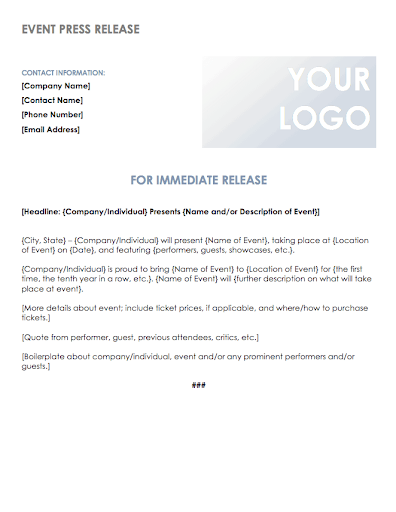
Many sponsors and exhibitors will appreciate the guidance and content, and it will let their audience know, which in turn may increase registration for your event as well. It also helps you shape the message around your virtual event, which will create a more consistent experience for everyone involved.
Helping Sponsors Key Takeaways
1. Sponsors will look to you as the expert, so share your expertise by offering content
2. Create templates for email, blog, and social media posts that your sponsors can send to their own audiences promoting their exhibitor booths at your event
Creating Value for your Sponsors and Exhibitors: Summary
Virtual and hybrid events have drastically increased access to attendees across the world. With the right plan, your event may have more attendees than ever before, and the cost to your organization may be less than it was in the past.
This is a wonderful opportunity for your organization to help create engagement between your attendees, and your sponsors or exhibitors.
By facilitating more interaction, you expose attendees to the products and services of exhibitors who may be of considerable help to them.
You also will have an easier time approaching potential sponsors, and will have more sponsors and exhibitors who want to participate again at your next event, if they know that you do everything you can to make sure that attendees visit their booths and contact them after the event.
By helping facilitate this engagement, you can help make your virtual or hybrid event fun and productive for everybody involved. Maintain a mindset of creating value. How can you genuinely improve the experience for your sponsors and exhibitors? What is it they need from you?
Virtual events are an opportunity for tremendous creativity. With the right software, so much is possible. These examples are only a few of the many ideas that will improve your next event.
